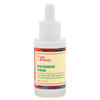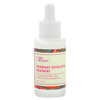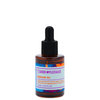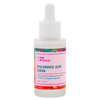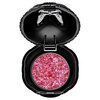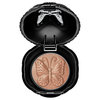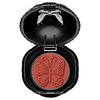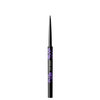Hair Coloring 101: Everything You Ever Wanted To Know About Bleaching
Published Jan 26, 2015

For a first timer, bleaching your hair is a big deal. We’ve all heard the horror stories and the possible of hair damage, breakage, or fried ends can stop someone from ever trying it. On the other hand, lightening your hair can open up an entire universe of possibility. Once you decide to take the plunge, you might wonder how you went so long without bleaching your hair!
In part two of our hair coloring series, we get the facts from NYC colorist Roxie Darling, who helps us bust some myths while learning the facts around hair bleaching.
How does hair bleach work?
“Bleach is a chemical that removes the natural pigment from your hair strands”, Roxie explains. “It comes in a powder form, and you have several different options of liquid developers to mix into it to alter the strength and make it work.” While frying the hair is avoidable, Roxie stresses that bleach will alter the state of your hair. “The first time you bleach your hair, it’s gonna change in texture and in color because you are literally stripping the pigment from it.” Don’t expect your hair to bounce back to normal an hour after the bleach comes comes off—but if you have taken care to bleach your hair properly, you can prevent damage and keep it looking healthy.
Does heat really help bleach work faster?
Bleach naturally heats up as the chemicals activate, which can cause discomfort when the formula is sitting on your scalp. But bleach can be more effective and even work faster when heat is applied to it. That’s why some salons may place a plastic cap over hair while bleaching and apply low heat from a blow drier to ensure it is lightened evenly.
But here’s something you may not have known: “Because the roots are the closest to the head, they have more heat than the rest of the hair shaft,” Roxie tells us. “So the roots are more likely to process more efficiently than the rest of the hair because of the heat that’s being emitted from your scalp.” She advises us to just make a note of this when coloring at home. “If you do your own hair and the roots come out lighter, it’s because there’s a natural heat coming from your scalp that’s making the chemical work more efficiently.” When she is coloring, Roxie uses a weaker formula on the roots of the hair to ensure the lightened shade comes out evenly.
What strength of developer is right for my hair?
Roxie considers 20 to be too mild for any vivid results and 40 to be riskier in terms of damaging the hair on the first try. “If you’re bleaching at home, you can repeat the process up to two or three times with a mild developer, such as 30 volume”, says Roxie. When it comes to choosing the right type of powder hair bleach (it’s different from what you use on your clothes!), it’s easy. As Roxie tells us, “They’re all pretty much the same”.

How can I prevent my hair from being “fried”?
“‘Fry’ is a strong word, but regardless, you are manipulating the quality of the hair by putting bleach on it. Aside from choosing a mild developer, another precautionary measure one can take before the big day is not washing the hair. “A few days worth of natural oil built up on your scalp can help to avoid irritation during bleaching,” Roxie informs us. The ammonia content can cause the scalp to itch during the bleaching process but that doesn’t mean your hair is getting cooked. “Hair can be bleached about 2 times over before the texture gets especially rough.”
How do I care for bleached hair?
“It’s important to moisturize after you bleach your hair because you’re removing a lot of the surface oil that your scalp produces” says Roxie,”by opening up the hair cuticle and doing the work to remove the natural pigment, the hair is changing. It usually takes a week or two for the hair to go back to having it’s natural softer elasticity.” Steering clear of heat styling is another way to keep bleached hair looking and feeling soft and healthy. Other habits, like over washing, can dry out hair, which is why Roxie recommends shampooing with a non-detergent shampoo no more than twice a week. “When you bleach your hair, you’re removing the natural oils, and you want to give your hair and scalp an opportunity to re-up on the oil you took out.”
Is it better to bleach at the salon?
While home bleaching couldn’t be easier, the risk of an uneven shade or excessive damage increases when you DIY. “I do think it’s important to seek out a hair stylist when it comes to bleaching because you don’t want to do it yourself, flub it, and have to go to work the next day looking like a jerk, or not feeling 100% confident that you look your best because you didn’t see a professional,” Roxie explains, “Most colorists will do a free consultation, and it’s worth talking about it with them because chemicals are a scary thing. If you seek out a colorist, trust them and allow them to take enough time to do the right amount of work.” Once you bleach you can’t go back, so lighten with caution to avoid major mistakes.
You Might Also Like
-
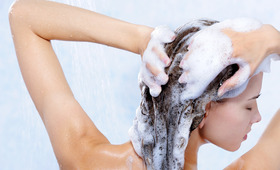
Hair
Splurge or Save: Shampoo
- 139
-

Hair
How to Turn Your Hat Hair Into Haute Hair
- 363
-
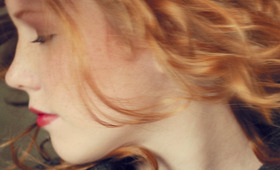
Hair
Define Your Curls and Waves
- 117
-
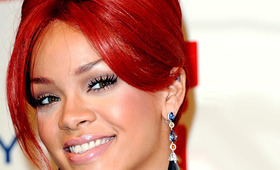
Hair
3 Glam Hairdos from Rihanna’s Hairstylist
- 180
-

Hair
Beach Hair Styling Tips
- 790
-
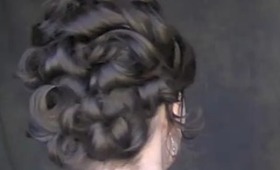
Hair
Hairstyling Tips for Short Hair
- 153
-

Hair
Blowout Secrets Hair Salons Don't Want You To Know
- 678
-
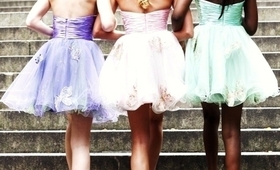
Hair
Elegant Prom Hair Tutorials
- 261





